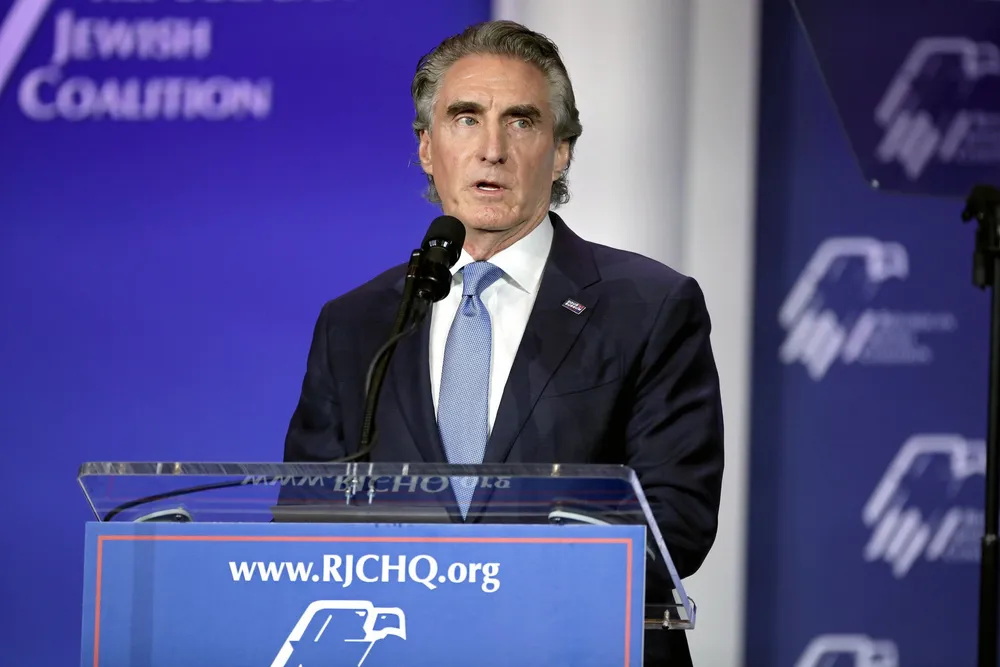Trump halts Equinor’s Empire Wind to New York in latest US offshore wind setback
After wind leasing and permitting practices review, federal regulator cites 'information that raises serious issues with respect to the project approvals'

The Trump administration has blocked further construction of Equinor’s 810MW Empire Wind 1 off New York City due to “serious issues with respect to the project approvals”, according to a Wednesday memorandum sent by Interior Secretary Doug Burgum to lead offshore wind regulator Bureau of Ocean Energy Management (BOEM).
The move was a major win for sector opponents and drew criticism from clean energy groups.
Onshore work was underway, including at the South Brooklyn Marine Terminal (SBMT), which will serve as the flagship marshalling port for New York’s mandated 9GW offshore wind development.
Despite its approved status, the project was placed for additional review by BOEM, part of the US Department of Interior (DoI).
“Pursuant to that review, staff of the Department of the Interior has obtained information that raises serious issues with respect to the project approvals” for Empire, Burgum wrote.
“The matter identified thus far suggests that approval for the project was rushed through by prior administration without sufficient analysis or consultation among the relevant agencies as relates to the potential effects,” he continued.
“In light of these revelations, and consistent with the President's instructions, I am directing you to exercise your authority to order Empire wind to cease all construction activities.”
Burgum didn’t specify information revealed, but New Jersey congressman Jeff Van Drew issued a statement taking credit for Interior’s move.
“I have worked closely with these federal agencies to expose the problems with this project, and now they are taking action,” he said.
“We would be surprised if it’s the only one. We think the Administration may similarly halt other projects that are not in advanced stages of development (i.e., significant construction completed),” he added.
“This fully federally permitted project has already put shovels in the ground before the President’s executive orders—it’s exactly the type of bipartisan energy solution we should be working on,” said New York governor Kathy Hochul.
“As Governor, I will not allow this federal overreach to stand. I will fight this every step of the way to protect union jobs, affordable energy and New York’s economic future.”
The project is under development some 15 miles (24 km) off New York’s Long Island coastline. With SBMT investment included, Equinor has said it will spend some $7bn on the array that will employ thousands in construction and operations.
Industry reacts
Climate Jobs New York coalition said: “At a time when energy demand and utility bills are rising across New York, we need to build more energy, not less. Offshore wind and other clean energy projects are creating much-needed energy, while supporting high-quality union jobs and providing a boon to local economies.”
“Halting construction of fully permitted energy projects is the literal opposite of an energy abundance agenda. With skyrocketing energy demand and increasing consumer prices, we need streamlined permitting for all domestic energy resources,” said Jason Grumet, CEO of American Clean Power Association, a national trade group.
“Doubling back to reconsider permits after projects are under construction sends a chilling signal to all energy investment,” he added.
“Stopping work on the fully federally permitted Empire Wind 1 offshore project should send chills across all industries investing in and holding contracts with the United States Government,” warned Liz Burdock, CEO of offshore wind advocacy group Oceantic Network.
“Preventing a permitted and financed energy project from moving forward sends a loud and clear message to all businesses - beyond those in the offshore wind industry - that their investment in the US is not safe.”
“The widening gap between rising electricity demand and available energy supply poses a serious threat to economic growth,” said Hillary Bright, executive director of industry advocate Turn Forward. “Offshore wind offers viable, shovel-ready projects that help close that gap. It is in our clear national interest to boost the deployment of valuable energy resources like offshore wind.”
NYC power crunch
Some 90% of electricity capacity in the Downstate region of New York City and neighbouring locales is fossil fuel, mostly natural gas and oil.
The state is looking to retire much of its fossil fuel generation as it strives for 70% clean power by 2030, mandated through the Climate Leadership and Community Protection Act (CLCPA).
Several other policy initiatives are likewise clamping down on capacity, including new ozone rules that will require investments in upgraded pollution controls for gas-fired peaking plants that owners are reluctant to make, and NYISO forecasts 1.6GW of peaking capacity will go offline next year.
Smaller gas-fired power plants owned by state utility New York Power Authority are also slated for retirement.
Since the CLCPA passed in 2019, the state has retired some 5.2GW of fossil fuel-fired generation but has installed only 2.25GW of new renewables in its place.
Meanwhile, power demand in the Empire State is surging, driven by electrification of the economy and transportation, increased manufacturing, and several planned investments in semiconductor manufacturing, green hydrogen plants, and cryptocurrency mining.